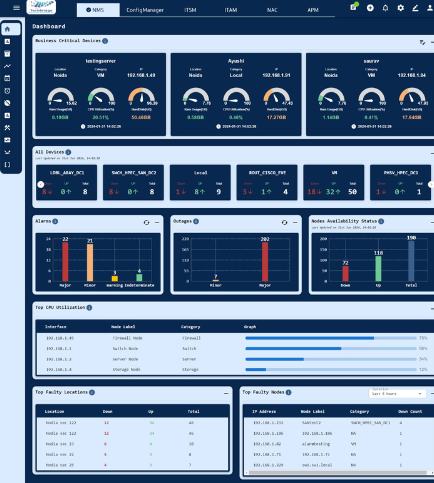Ticketing Tool/HelpDesk/IT Service Management
tbITSM meets the specified standards of ITIL v3, the most widely accepted best practice framework for Service Management Software. It provides numerous advanced features for inventory, asset and HELP DESK management.
ITSM Software – that helps you plan and manage IT changes in an easy way, solve problems efficiently when they come and allows you to take control over your company’s IT infrastructure.
It uses ITIL as a method of reviewing, defining and improving their ITSM processes. Implementing a new service desk toolset that provides the ability to support ITIL processes is a vital part of delivering the in‐house provision of the services and benefits that ITIL based processes can offer.
Combines categorization, escalation, service level agreement, impact, urgency, priority calculation, status standardization, validation request at several levels & implementation of automatic workflows based on business policies.

Features
Service Level Management
Deals with negotiating, agreeing and documenting existing services with some level of policies. Defines, document, agree, monitor, measure, report, and review the level of IT service provided. Ensures specific and measurable targets are developed for all IT services.
Service Assets & Configuration Management
Deals with maintaining up-to-date and verified database of all assets and CIs which are also made available to other service management processes. It uses Configuration Management System (CMS) which contains one or more Configuration Management Databases (CMDB)
Request Fulfillment
Refers to demand by the users. These requests can be regarding small changes, changing the password, installing additional software application, requesting information etc. Depending upon the number of Service Requests, an organization usually has, a specialized team that can be formed to fulfill those requests.
Incident Management
Give your technicians the power to track and manage the lifecycle of every ticket and build a contextual relationship by relating data points across various ITIL processes. Let your technicians talk directly to requesters using collaboration and chat.
Change Management
Effectively manage, plan, implement and review changes to your IT infrastructure. View the entire Change lifecycle as separate stages and assign an owner to each stage. Create user-defined approval workflows to ensure the quality of a Change and add a backup plan in case something goes wrong
Problem Management
Capture the root cause behind unplanned disruptions in your infrastructure and business processes using a problem ticket. Relate multiple incident tickets (symptoms) with a single problem (root cause) and allow multiple technicians to work on a problem using the collaboration features.

